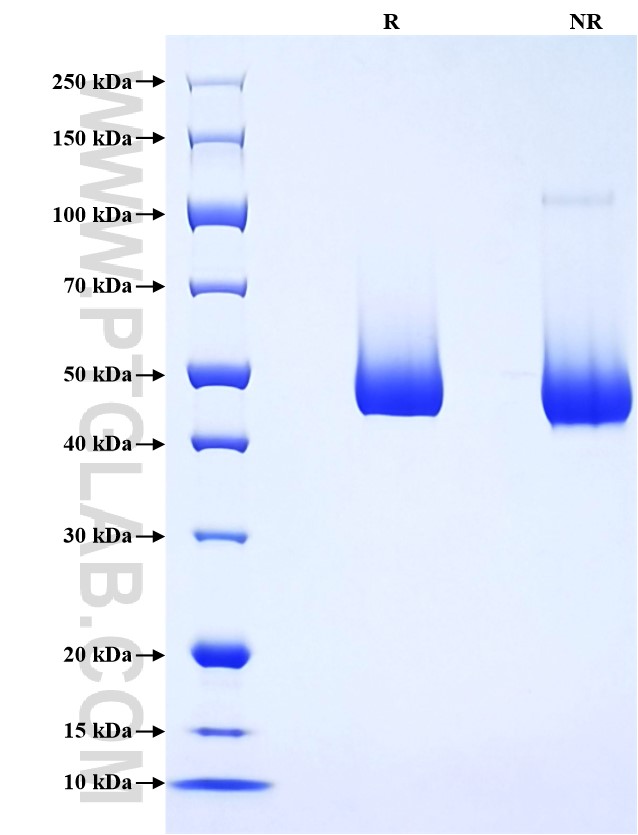Recombinant Human Serpin F1/PEDF protein (His Tag)
种属
Human
纯度
>90 %, SDS-PAGE
标签
His Tag
生物活性
未测试
验证数据展示
产品信息
| 纯度 | >90 %, SDS-PAGE |
| 内毒素 | <0.1 EU/μg protein, LAL method |
| 生物活性 |
Not tested |
| 来源 | HEK293-derived Human Serpin F1 protein Gln20-Pro418 (Accession# P36955) with a His tag at the C-terminus. |
| 基因ID | 5176 |
| 蛋白编号 | P36955 |
| 预测分子量 | 45.4 kDa |
| SDS-PAGE | 45-55 kDa, reducing (R) conditions |
| 组分 | Lyophilized from 0.22 μm filtered solution in PBS, pH 7.4. Normally 5% trehalose and 5% mannitol are added as protectants before lyophilization. |
| 复溶 | Briefly centrifuge the tube before opening. Reconstitute at 0.1-0.5 mg/mL in sterile water. |
| 储存条件 |
It is recommended that the protein be aliquoted for optimal storage. Avoid repeated freeze-thaw cycles.
|
| 运输条件 | The product is shipped at ambient temperature. Upon receipt, store it immediately at the recommended temperature. |
背景信息
Serpin F1, also known as Pigment Epithelium-Derived Factor (PEDF) or Cell Proliferation-Inducing Gene 35 Protein (PIG35), is a multifunctional protein that belongs to the serpin family. This family of proteins is characterized by their highly conserved core structure, which is critical for their function as serine protease inhibitors. Serpin F1 is secreted and has been shown to strongly inhibit angiogenesis, making it a potent inhibitor of blood vessel growth. It also has anti-tumor and neurotrophic functions, playing a significant role in various biological processes including cell differentiation, tumor suppression, and neuronal protection. Serpin F1 is expressed in quiescent cells and has been implicated in the regulation of gene expression and cellular proliferation.
参考文献:
1. J A Huntington. et al. (2011). J Thromb Haemost. 1:26-34. 2. Law RH. et al. (2006). Genome Biol. 7: 216. 3. Kaslik G. et al. (1997). Biochemistry. 36:5455–5464. 4. Huang X. et al. (2011). J Biol Chem. 286: 8740–8751.


